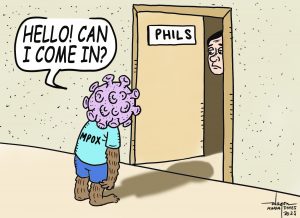If it takes a village to raise a child, what would you rather have that village be? Would you rather it be in a skyline shadowed with monotonous gray blocks, perpetually blanketed in dark smog? Or one peppered with verdant foliage, interspersed with modern design?
In the modern age, the city is the nebula in which our social, political, economic, and environmental realities converge. Over half of the world’s population are now urban dwellers, and thus cities increasingly become more important in how we live our lives (Grimm et al., 2008). The way we create our cities is a manifestation of the values we want to exalt as a community. The visibility of these values in our built environment inculcates related behaviors in its citizens. We look at Japan as an example: its efficient public transport system supports the country’s monochronic culture, and thus its residents emulate promptness in their daily lives.
As future architects, engineers, and urban planners of the Philippines, how do we create cities we would consider livable and sustainable?
Certainly, the question of urban livability is as complex as the cities it aims to describe. Even in academia, the concept of livability is vast in its scope and definition, one with varied nuances. The description that I would use for this essay is the idea that livability is directly linked to the sustainability of a society’s life, from the economic to the environmental (Larco, 2015). This means that a livable city is one that manages its resources well without compromising the ability of future generations to flourish. Thus, I forward one key point for evaluating a city’s livability in the 21st century: its management and integration of built systems and natural systems into a cohesive unit, which ultimately increases the quality of life of its inhabitants.
Our built systems include everything conceived from human thought and experimentation. Economics, governance, innovation, and infrastructure are only some of the ways humans have made sense of their social existence. Ultimately, it is the creation and execution of policies that regulate and improve these systems. A livable city has well-defined streets and public places, equitable social services, and has accountable leaders that act for the benefit of the community (Kashef, 2016).
On the other hand, an undoubtedly mismanaged facet of urban livability in many countries is a city’s interaction with nature. For too long, the process of modernization and the exploitative growth of the human population has rendered the natural environment merely as a bank of resources it can only get from but never give back to. In the early 1970s in the Philippines, for example, over 170,000 hectares of forest lands were lost to deforestation annually (Liu, Iverson, & Brown, 1993). While this has undoubtedly boosted industries like agriculture and paved the way for urban infrastructure, it has also cascaded into effects like a massive increase in carbon dioxide emissions, which unavoidably weakens an area’s ecological balance and deteriorates its air quality (Arshad, Robaina, Shahbaz, & Veloso, 2020).
Ultimately, the problem is that these ecological issues do not play a big part in the urban public’s view of nature. Generally, people do not realize the weight of human activity on the environment because it is isolated from them. In increasingly developed places, nature and urban places are framed as opposites, with “green” and “gray” spaces battling in a zero-sum game. Instead of this, we should see that these aspects of life can actually enhance each other.
As a country with abundant natural bounties, we need to reintegrate our environment back into our spaces; that is, nature should not be isolated from the metro, it should be present in daily urban life. We have to massively reform our cities to accommodate and regenerate our biosphere, ensuring that its preservation is visible to everyone.
As this nation’s youth, one significant solution we can take part in this endeavor is the preservation of green spaces in increasingly metropolitan cities like Davao. Just four years ago, a campaign was launched to preserve natural reserves in the city to address carbon sequestration and the effects of climate change. It is through efforts like these where the youth can actively step in and assert their appreciation of our natural world. It is also through these where the average person can see green and gray spaces side by side and observe how they can synergize.
Of course, this can also be augmented by other built systems. An increase of focus towards contemporary environmental issues in the classroom, such as the EcoTeneo initiative, immediately puts eco-friendly mindsets at the forefront of education. In infrastructure, cities could opt for more bike lanes and pedestrian walkways to replace the contemporary car-centric urban design. Furthermore, the creation of more efficient public transportation units that use green fuel could urge people away from clogging the streets with private vehicles. We see that urban policy-making and environmental preservation can go hand-in-hand in making our lives a fruitful balance between our natural and human-made environments.
The city of the future is one that captures the spirit of both human ingenuity and natural beauty, using both as ways to deal with alarming, present-day issues like climate change. We need to create cities where life is not just day-to-day survival, but a sustainable source of motivation beyond just the physical. We need to introduce and maintain the value of the environment in public discourse in order to instill eco-friendly values not only for us but for the next generation that will maintain this balance. It takes a village to raise the children of the future, and we better start building that village now.
(This is the First Prize the winner in the Write and Design for Nature contest of IDIS in partnership with the Mindanao Times)



